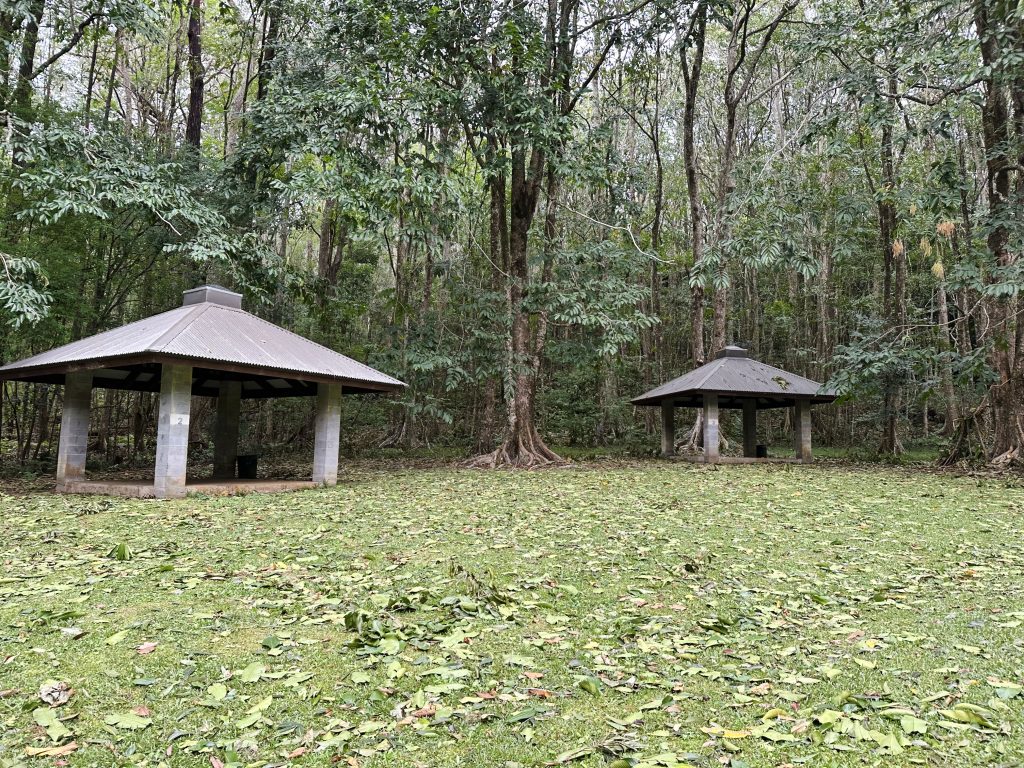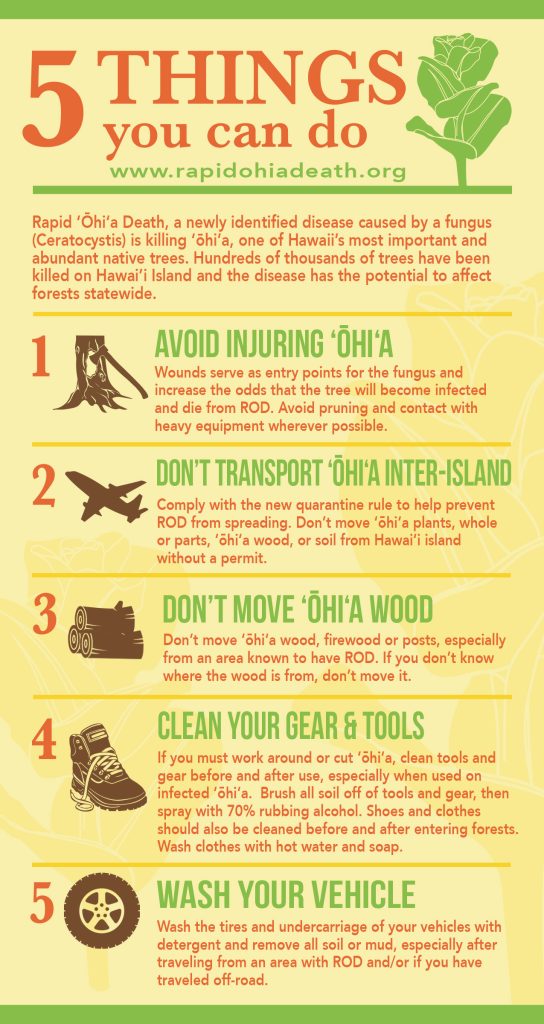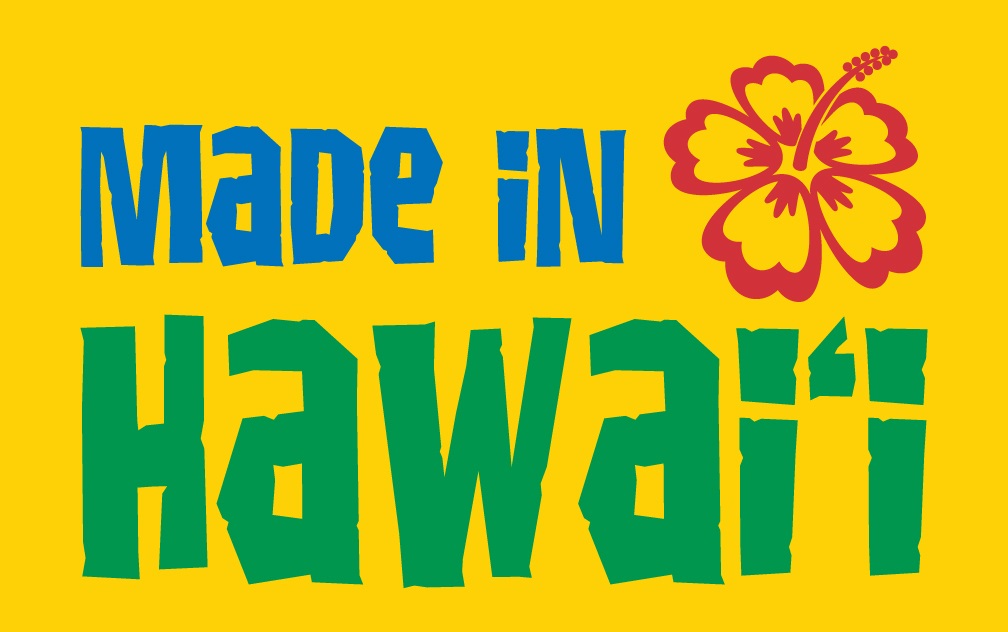
**IMPORTANT PARK NOTICES**
Monitor weather reports before your park visit.
•
[KAUA’I] UPDATE 12/18/25 Kalalau trail has REOPENED.
•
[OʻAHU] UPDATE 12/15/25 — Ka\'ena Point State Park: Mokulē\'ia Section Vehicle Access Gate is temporarily CLOSED due to saturated road conditions.
•
[ALL ISLANDS] UPDATE – 12/12/25: Camping - Reservations for February 1, 2026 and beyond available at https://explore.ehawaii.gov, please create an account on Explore Outdoor Hawaiʻi to make a camping reservation.
Kalōpā State Recreation Area
UPDATE – 12/12/25: Camping - Reservations for February 1, 2026 and beyond available at https://explore.ehawaii.gov, please create an account on Explore Outdoor Hawaiʻi to make a camping reservation.
| Hours |
Daily: 7:00am to 8:00pm |
| Entrance Fee | None |
| Trail Name | |
| Camping & Lodging |
BY PERMIT ONLY CAMPING
CABINS
NOTE: Online reservations for the cabins at Kalopa must be made at least seven (7) days in advance of check-in date. |
Description
Lodging, picnicking and easy family nature hike (0.7-mile loop trail) in a native ‘ohi’a forest at a 2000-foot elevation. Trail passes through the beginnings of an arboretum of the Island’s native plants. Additional trails in the adjoining forest reserve, including a 2-mile horse loop trail. (100.0 acres)
Lodging Information
Kalōpā State Recreation Area rents duplex cabins. Cabin accommodations consist of 8-person units provided with bunk beds, toilet facilities, and hot shower. Hot showers are only available in the cabins. There is no hot water for the campgrounds. Furnishings include a gas range, water heater, refrigerator, limited dishes, cooking and eating utensils, tables and chairs, as well as restrooms. No linen, bedding or towels.
Other Conditions Apply
1. Guests must provide their own liquid hand soap and hand sanitizer – we do not provide it.
2. ALL CAMPERS MUST BE PRESENT FOR MANDATORY CHECK IN WITH STAFF AT 3:00PM
3. Only names listed are covered by the permit.
HELP HAWAII FIGHT RAPID ʻŌHIʻA DEATH (ROD)
ʻŌhiʻa (Metrosideros polymorpha), the most abundant native tree in the state of Hawaiʻi, are dying from a new fungal disease. On Hawaiʻi Island, and currently spreading to other islands, hundreds of thousands of ʻōhiʻa have already died from this fungus, called Ceratocystis. Healthy trees appear to die within a few days to a few weeks, which is how the disease came to be called “Rapid ʻŌhiʻa Death.” This disease has killed trees in all districts of Hawaiʻi Island and has the potential to kill ʻōhiʻa trees statewide. – College of Tropical Agriculture and Human Resources (CTAHR), University of Hawaii at Manoa. There is no effective treatment to protect ʻōhiʻa trees from becoming infected with Ceratocystis or cure for trees that exhibit symptoms of the disease. Therefore, we have an important role to help prevent the further spread of Rapid ʻŌhiʻa Death. There are 5 simple things we can all do to help in this effort:
1) Don’t move ʻōhiʻa wood or ʻōhiʻa parts. If you don’t know where the ʻōhiʻa material is from, don’t move it.
2) Don’t transport ʻōhiʻa inter-island. Follow the Hawaii State Department of Agriculture quarantine rule and don’t move ʻōhiʻa off of the Island of Hawaiʻi.
3) Avoid injuring ʻōhiʻa. Wounds serve as entry points for the fungus and increase the odds that the tree will become infected and die from ROD. Avoid pruning and contact with heavy equipment wherever possible.
4) Clean gear and tools, including shoes and clothes, before and after entering forests. Brush all soil off of tools and gear, then spray with 70% rubbing alcohol. Wash clothes with hot water and soap.
5) Wash your vehicle with a high pressure-hose or washer if you’ve been off-roading or have picked up mud from driving. Clean all soil off of tires and vehicle undercarriage.
For more information on Rapid ʻŌhiʻa Death please see the videos and outreach material below.






